The infrastructure for a spatial and temporal determination of hazardous substances using integrative sampling devices
An integration of field work and laboratory experiments is necessary for the development and application of efficient techniques for environmental monitoring like integrative sampling.The time-resolved accumulation of environmental contaminants by integrated sampling is an innovative and promising alternative to conventional snap-shot sampling. The fields of application cover all relevant marine environmental compartments (sediment, water, biota).
Calibration and field testing
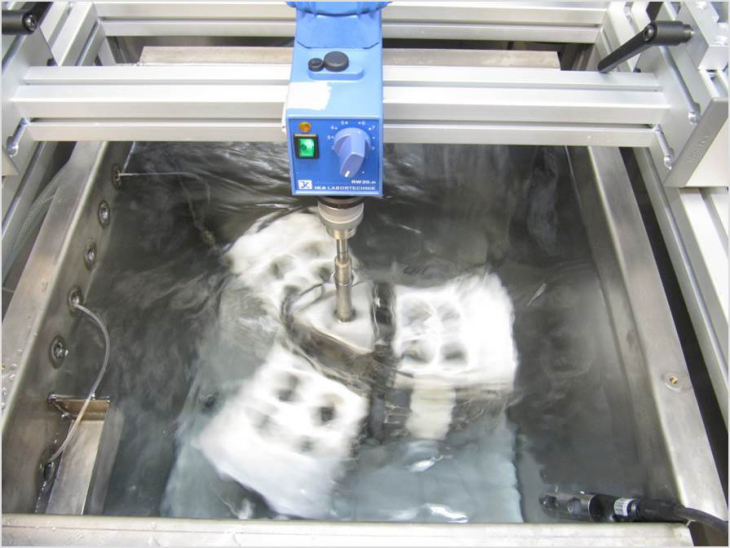
Currently the most commonly used passive sampling devices for time-integrated analysis of metals and metal species are DGT (diffusive gradients in thin films) as well as the so called Chemcatcher® -Metal. An usual application for environmental monitoring suffers from lacking data on diffusion rates for most of the interesting elements that are necessary to calculate their time weighted avarage concentration.
Therefore defined calibration experiments have been conducted under controlled temperature, current and salinity conditions for several priority and emerging elements. ICP-MS has been used to analyse passive sampling extracts.
Dynamic application - FlowBox
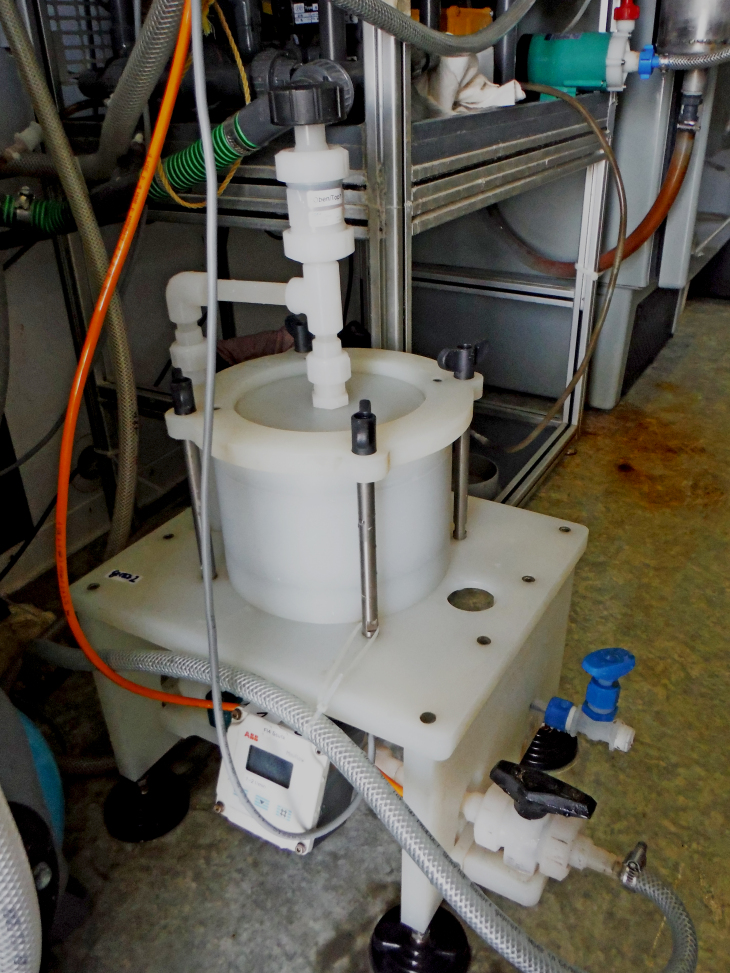
A mobile continuous flow system has been developed for the improved utilization of passive sampler with respect to perform time-integrated field monitoring of dissolved labile metal species under controlled and reproducible hydrodynamic conditions . The system is based on a specifically designed stirring system, which is integrated into a continuous flow box dedicated for trace metal analysis. This system device represents a novel solution for ensuring constant uptake conditions during the exposure of passive sampler in the field. The system can be easely installed at research vessels.
The blue mussel (Mytilus ssp.) represents a well-investigated indicator organism, which is a common tool for assessing the impact of environmental and chemical stress on aquatic habitates. Mussels are sessile filter feeders, that make them a feasible candidate for ecotoxiological studies.
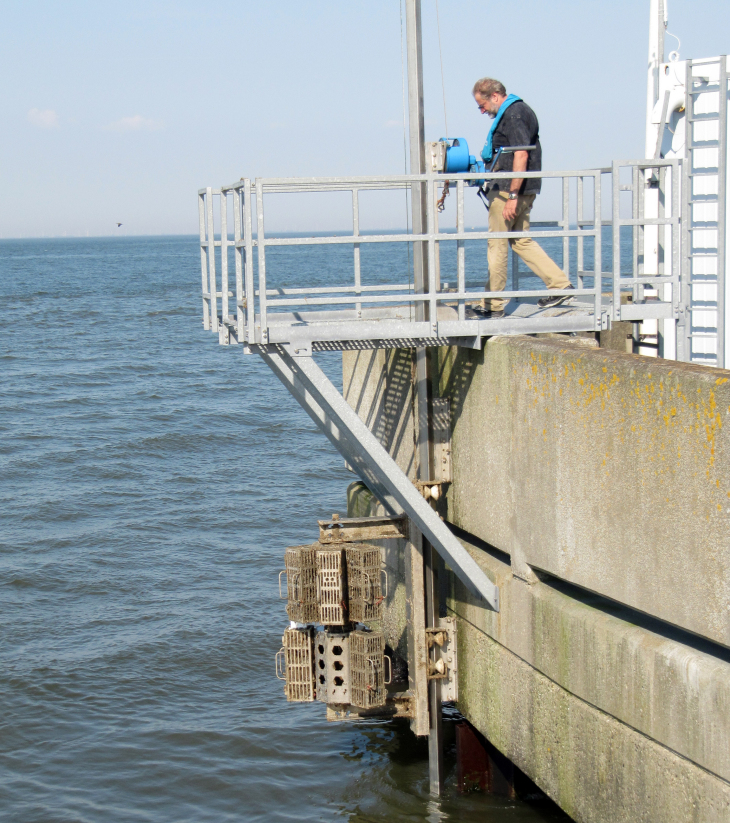
In conjunction with passive and spot sampling mussels were deployed at two especially designed coastal stations a near-shore station in the anthropogenic impacted estuary of the river Elbe and an off-shore station at the research field MARGATE at the Island of Helgoland in the German Bight (North Sea). The stations are constructed in the same way. There are 16 places for mussel cages and instrument holdings at each station. The instrument holdings are interchangeable, variable and can be used for all kinds of passive sampling devices.
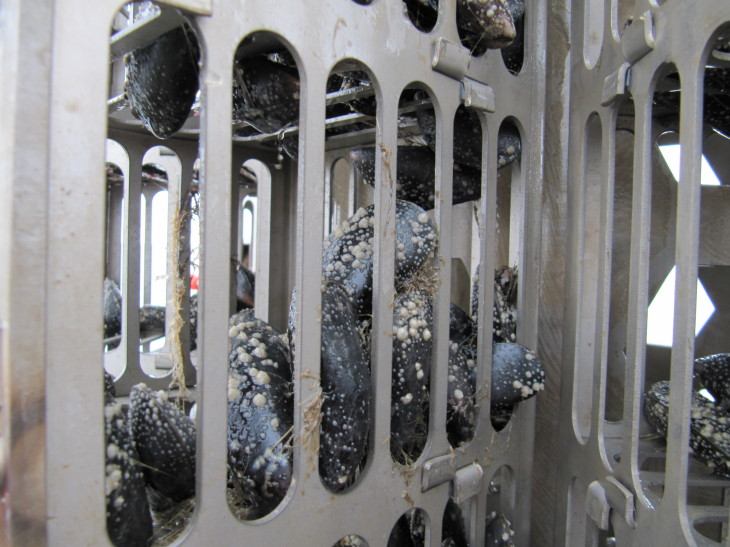
The stations are submerged to avoid tidal stress for the active sampler. The regular sampling at Helgoland is done by the group of Scientific Diving, Alfred Wegener Institute for Polar- and Marine Research and the samples at Cuxhaven are accessible via an elevator. Within a pilot study we designed and refined the infrastructure and we built up the logistics for continuous maintanance and sampling. Especially the sampling of the mussles requires a fast and cool transport in order to ensure comparable conditions for detecting physiological and biochemical stress marker.
Field campaigns
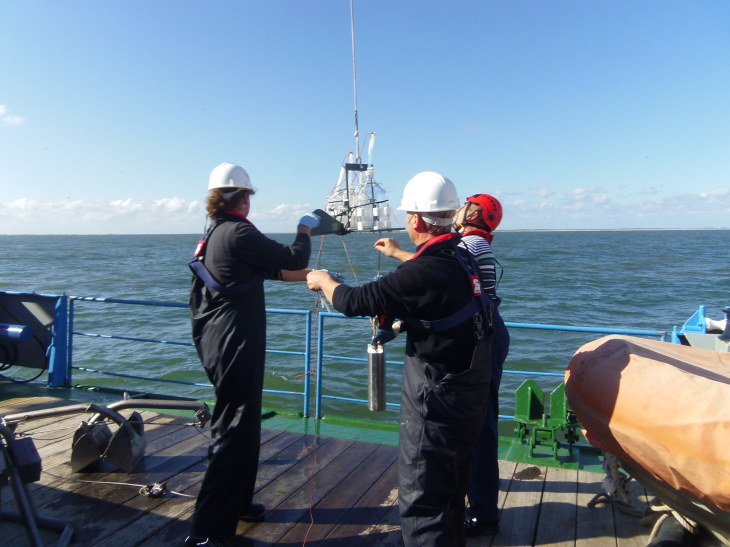
The instrumentaion and logistics for research cruises necessitates special requirements. It includes clean benches and filtering systems for the on-board handling of samples in order to avoid external contamination. Research Cruises were conducted in the framework of the NOAH Project or during our Wadden Sea campaign in 2014.
Sediment laboratory
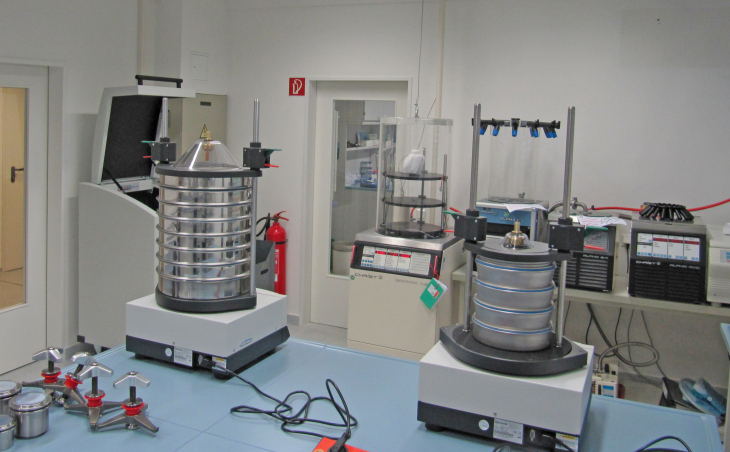
A focal research point are the status and function of sea floors as environmental compartment a potential sink or source of inorganic contaminants. Therefore a laboratory for the preparation of sediment samples was implemented including facilities for freeze drying, sieving and grinding. A Laser Particle Sizers ANALYSETTE 22 MicroTec plus (0.08 – 2000 µm) is used to measure the particle size distribution.
